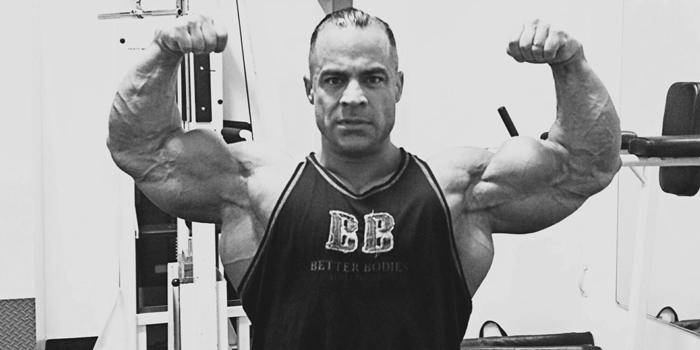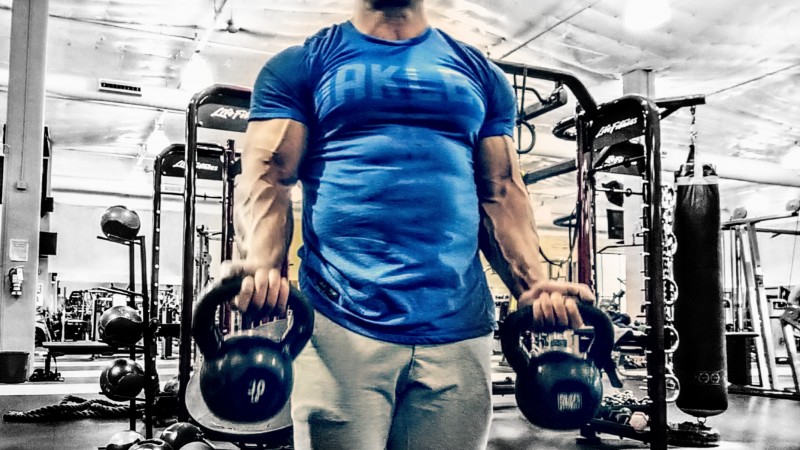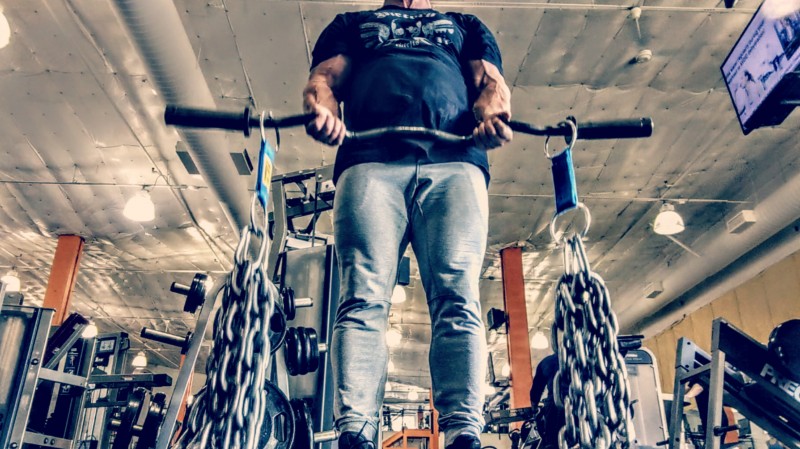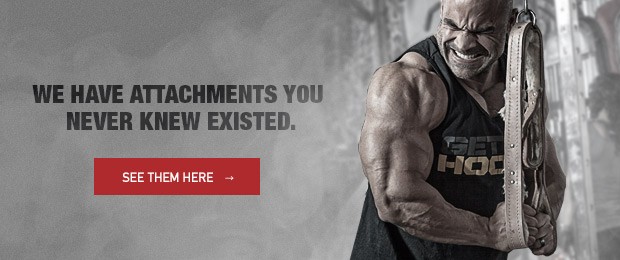
If a poll were conducted in the gym, I’m guessing bicep circumference would rank pretty high on the list of priorities for most guys. Early in my pro career, I experienced criticism for my arm development but later received praise. So what changed? Well, most significant was the priority of a pump over pounds; and secondarily, exercise variety and frequency.
Technically, bodybuilding is about balance and proportion, but a certain amount of the freak-factor element comes into play. Case in point: Lee Priest. The guy possessed ridiculous arm development, which negatively skewed his proportion and symmetry particularly in relation to his back and pec development. However, the wow factor made Lee a crowd and magazine cover favorite. You know, back when magazines were a thing.
In this article, I can’t promise you Lee Priest-proportioned bicep development, but I will share some ideas to unlocking new growth over a six-week period of time. However, keep in mind that triceps make a significant part of overall arm development. Read Maximizing Triceps Development to learn more.
Week 1: Blood Flow Restriction
How
Restrict blood flow to your biceps by wrapping your upper arm. Perform several rounds of the same exercise without removing the wraps until the end. You will need a pair of wraps such as these.
Why
Facilitates arterial blood flow to the working muscle, while restricting venous blood return. Requires less weight and creates a nasty pump.
Never lose sight of the fact that when it comes to biceps training, the pump is more important than the pounds. With that in mind, there’s no better way to kick off Week 1 than with the mother of all pump training techniques: occlusion/blood flow restriction training. Below is a video showing the technique. Do this sequence for three rounds, and you’ll experience the most painful pump of your life.
Week 2: Brachialis
How
Curling weight with your palms in a neutral or pronate hand position.
Why
The brachialis tends to be an under-trained and neglected muscle on most people. Developing it will quickly increase arm size and aid the illusion of larger biceps.
I suggest using two exercises in the 8 to 12 rep range. Perform three to four sets of each exercise. It’s difficult to completely isolate the brachialis, but both it and the brachioradialis are emphasized with hammer curls and reverse curls. Focus on full extension at the bottom of each rep to stretch the brachialis. Here is a video of preacher, reverse EZ bar curls:
Week 3: Bands and Chains
How
Add bands or chains to barbell or EZ bar curls.
Why
Week 1 focused on the pump, Week 2 targeted a neglected muscle for optimal arm development, and Week 3’s bands and chains facilitate explosiveness and intensify the peak contraction via overloading the top end of the rep.
Chains tend to be my favorite from a pure top end overload standpoint. Adding them to an EZ curl bar for standing curls works well. The idea is for the preponderance of the chains to lay on the ground at the bottom of the movement, thereby unloading the weight so you can safely curl from the stretched position with explosiveness. As the chains come off the ground, the peak contraction intensifies. I suggest a solid four to five sets in the 6 to 12 rep range.
Week 4: Extended Sets (Drops, Super & Giant Sets)
How
Extend sets beyond failure by dropping the weight, changing the exercise (without rest), or sequencing multiple single exercises together.
Why
Growth occurs when momentary muscle failure is achieved, regardless of the weight used. Clustering multiple exercises or dropping the weight to continue the set increases the opportunity for growth.
Countless variations exist here, but of primary importance is to simply extend a set beyond the initial point of failure. Drop sets present a straightforward approach, but giant sets are another way to add variety by clustering three to four biceps variations whereby you go from one to the next without resting. Below is an example, utilizing a band, called jettison curls. Three to four rounds and your biceps will be trashed.
Week 5: Kettlebell Curls
How
Simply perform curls using kettlebells with your palms supinated (facing up).
Why
Curling a kettlebell forces the movement to stop short of the uppermost position because the kettlebell will hit your forearm, thus removing any chance of losing biceps tension at the top.
I suggest performing a solid four to five sets. The value of continuous tension is similar to Week 1’s blood flow restriction. A contracted muscle automatically restricts blood flow, which is why continuous tension exercises burn so bad.

Week 6: Paul Carter’s 50 Rep Method
*I attribute this method to Paul Carter.
How
Select any biceps focused exercise and a weight in which you can 20 to 25 reps. Go to muscle failure with the same weight for three working sets with the goal of achieving a sum total of 50 reps between the three sets. It might look something like this: Set 1 x 22 reps, Set 2 x 15 reps, Set 3 x 13 reps; total reps 50.
Why
Muscle failure and massive pumps are primary to bicep growth. This technique efficiently accomplishes both.
While I’m not using the exact technique in the video below, the exercise displayed is my go-to for Paul’s 50 Rep Method.
Conclusion
By the end of this six-week period, my hope is you gain a few new techniques worth adding to your own bicep-training arsenal. I trust your biceps experienced a measure of shock that resulted in added inches and you realized the importance of exercise variety and pump.
The next step is to intelligently implement these techniques while increasing frequency until you find the right balance of optimal recovery and growth.












It depends on a person's training experience. For someone new yes, just as prescribed. For a seasoned lifter I still suggest doing each week as described, but adding in a second arm workout to the week where volume again is minimal. I'm most in favor of short and intense, but frequent workouts. Frequency over marathon training sessions.
I hope this helps.
All the best,
Mark